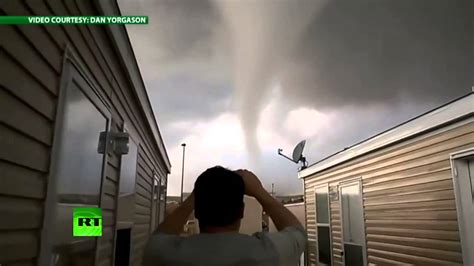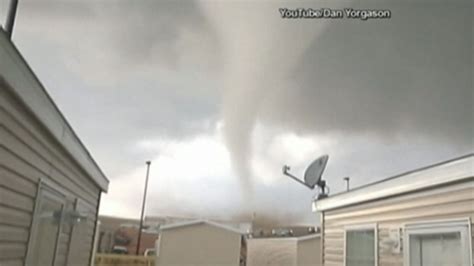
Water levels in key California reservoirs are rapidly rising, bringing the state’s water supply closer to full capacity after years of severe drought conditions, prompting cautious optimism among state officials.
California water officials are expressing renewed hope as crucial reservoirs approach capacity, signaling a significant turnaround from the prolonged drought that has gripped the state. Recent storms and a robust snowpack have dramatically increased water levels, prompting celebrations while also emphasizing the need for continued water conservation and infrastructure improvements.
The California Department of Water Resources (DWR) reports that major reservoirs, including Lake Oroville and Folsom Lake, have experienced substantial gains in water storage. “We’re seeing a very significant turnaround in our water picture,” said DWR Director Karla Nemeth. “This is the result of both significant precipitation and the work we’ve done to improve our forecasting and water management.” The rising water levels not only secure urban and agricultural water supplies but also enhance hydroelectric power generation and improve conditions for fish and wildlife.
However, officials remain cautious, highlighting the need for sustained water management practices. “While this year’s water conditions are encouraging, we must remember that California’s climate is variable, and we need to be prepared for future droughts,” Nemeth added. The state is investing in infrastructure projects, such as Sites Reservoir, to further improve water storage and delivery capabilities.
Dramatic Turnaround After Years of Drought
For years, California has battled severe drought conditions, resulting in water restrictions, agricultural losses, and environmental damage. The current surge in reservoir levels marks a stark contrast to the previous years, offering a much-needed respite.
The drought had far-reaching consequences, impacting everything from agriculture to urban water use. Farmers were forced to fallow fields, and cities implemented strict water conservation measures. The declining water levels also threatened fish populations, particularly salmon, which rely on adequate river flows for spawning.
The current water year, which began in October, has been exceptionally wet, with numerous atmospheric river events bringing heavy rain and snow to the state. The Sierra Nevada snowpack, a crucial source of water for California, is well above average, ensuring continued runoff into reservoirs as the snow melts.
Key Reservoirs Reaching Capacity
Several of California’s key reservoirs are nearing their full capacity, providing a significant boost to the state’s water storage.
-
Lake Oroville: As one of California’s largest reservoirs, Lake Oroville has seen a substantial increase in water levels. The reservoir is currently at a higher level than it has been in years, offering a buffer against future dry spells. The increased storage capacity at Lake Oroville also enhances the reservoir’s ability to generate hydroelectric power, a vital source of clean energy for the state.
-
Folsom Lake: Located near Sacramento, Folsom Lake has also experienced significant gains in water storage. The rising water levels not only benefit the region’s water supply but also improve recreational opportunities, such as boating and fishing. Folsom Lake plays a crucial role in flood control, helping to protect downstream communities from potential flooding during heavy rain events.
-
Shasta Lake: While not specifically mentioned in the provided article, Shasta Lake is another of California’s largest reservoirs and a key component of the state’s water infrastructure. Like Oroville and Folsom, Shasta Lake has also benefited from the recent storms and snowpack.
Infrastructure Investments for Long-Term Water Security
California is investing in several infrastructure projects to enhance its water storage and delivery capabilities, ensuring long-term water security for the state.
-
Sites Reservoir: As mentioned by DWR Director Karla Nemeth, Sites Reservoir is a major project aimed at increasing off-stream water storage. The reservoir will capture and store water from the Sacramento River during wet periods, providing a reliable water supply during dry years. “Sites Reservoir will be a game-changer for California’s water management, allowing us to store water when it’s available and use it when it’s needed most,” Nemeth stated.
-
Delta Conveyance Project: While controversial, the Delta Conveyance Project is another infrastructure initiative designed to improve water delivery from the Sacramento-San Joaquin Delta to Southern California. The project involves building a new tunnel to divert water under the Delta, reducing the risk of saltwater intrusion and improving water quality.
-
Water Recycling and Desalination: In addition to traditional infrastructure projects, California is also investing in water recycling and desalination technologies to diversify its water supply. Water recycling involves treating wastewater to make it suitable for non-potable uses, such as irrigation and industrial cooling. Desalination, on the other hand, removes salt from seawater or brackish water to create a potable water supply.
Ongoing Need for Water Conservation
Despite the improved water conditions, officials emphasize the importance of continued water conservation efforts. California’s climate is highly variable, and future droughts are inevitable.
“We cannot afford to become complacent,” said Governor Gavin Newsom. “Water conservation must become a way of life in California.” The state has implemented various water conservation programs, including incentives for homeowners to replace lawns with drought-tolerant landscaping and rebates for purchasing water-efficient appliances.
-
Residential Water Use: Reducing residential water use is a key component of California’s water conservation strategy. Residents are encouraged to take shorter showers, fix leaks promptly, and use water-efficient appliances.
-
Agricultural Water Use: Agriculture accounts for a significant portion of California’s water use. Farmers are adopting more efficient irrigation techniques, such as drip irrigation, to reduce water consumption.
-
Urban Landscaping: Replacing lawns with drought-tolerant landscaping is another effective way to conserve water. Native plants are well-adapted to California’s climate and require less water than traditional lawns.
Environmental Benefits of Increased Water Levels
The rising water levels in California’s reservoirs also provide significant environmental benefits.
-
Fisheries: Increased river flows improve conditions for fish populations, particularly salmon. Adequate river flows are essential for salmon spawning and migration.
-
Wildlife Habitat: Higher water levels can restore wetlands and improve habitat for a variety of wildlife species. Wetlands provide crucial habitat for birds, mammals, and amphibians.
-
Water Quality: Increased reservoir storage can improve water quality by diluting pollutants and reducing the concentration of harmful substances.
Challenges and Concerns
While the improved water conditions are encouraging, several challenges and concerns remain.
-
Climate Change: Climate change is expected to exacerbate California’s water challenges, with more frequent and intense droughts. The state must adapt to a changing climate and develop strategies to manage water resources effectively.
-
Water Rights: Water rights issues can be complex and contentious in California. Ensuring fair and equitable allocation of water resources is a major challenge.
-
Aging Infrastructure: Much of California’s water infrastructure is aging and in need of repair or replacement. Investing in infrastructure improvements is essential for maintaining a reliable water supply.
Community Reactions
Communities across California are reacting positively to the improved water conditions, but there is also a sense of cautious optimism.
-
Farmers: Farmers are relieved to have access to more water for irrigation, reducing the need to fallow fields.
-
Urban Residents: Urban residents are grateful for the easing of water restrictions, but they also recognize the need to continue conserving water.
-
Environmental Groups: Environmental groups are pleased to see improved conditions for fish and wildlife, but they remain concerned about the long-term impacts of climate change on water resources.
Looking Ahead: A Sustainable Water Future
California is working towards a sustainable water future through a combination of infrastructure investments, water conservation measures, and innovative technologies.
-
Integrated Water Management: Integrated water management involves managing water resources in a holistic and coordinated manner, taking into account the needs of all stakeholders.
-
Adaptive Management: Adaptive management involves learning from past experiences and adjusting management strategies as needed.
-
Public Engagement: Public engagement is essential for building support for water management policies and ensuring that decisions are made in a transparent and accountable manner.
The recent surge in reservoir levels offers a glimmer of hope for California’s water future, but sustained efforts are needed to ensure long-term water security for the state. The combination of strategic planning, infrastructure development, responsible environmental protection, and community involvement promises a secure water future for California.
Frequently Asked Questions (FAQ)
-
What caused the recent surge in water levels in California’s reservoirs?
The surge is primarily due to a series of atmospheric river events that brought heavy rain and snow to the state during the current water year. The Sierra Nevada snowpack, a crucial source of water for California, is well above average, ensuring continued runoff into reservoirs as the snow melts. As DWR Director Karla Nemeth notes, “We’re seeing a very significant turnaround in our water picture. This is the result of both significant precipitation and the work we’ve done to improve our forecasting and water management.”
-
Which reservoirs have benefited the most from the recent storms?
Lake Oroville and Folsom Lake have experienced substantial gains in water storage. These reservoirs are now at higher levels than they have been in years, providing a buffer against future dry spells. While not specifically mentioned in the article, Shasta Lake, another of California’s largest reservoirs, has also benefited.
-
Does the improved water situation mean that California is no longer in a drought?
While the improved water conditions are encouraging, officials emphasize the need for continued water conservation efforts. California’s climate is highly variable, and future droughts are inevitable. “While this year’s water conditions are encouraging, we must remember that California’s climate is variable, and we need to be prepared for future droughts,” Nemeth stated. Governor Gavin Newsom has also stressed that “We cannot afford to become complacent. Water conservation must become a way of life in California.”
-
What is the Sites Reservoir project, and how will it improve California’s water supply?
Sites Reservoir is a major project aimed at increasing off-stream water storage. The reservoir will capture and store water from the Sacramento River during wet periods, providing a reliable water supply during dry years. “Sites Reservoir will be a game-changer for California’s water management, allowing us to store water when it’s available and use it when it’s needed most,” according to DWR Director Karla Nemeth.
-
What can California residents do to continue conserving water, even with the improved water situation?
Residents are encouraged to take shorter showers, fix leaks promptly, and use water-efficient appliances. Replacing lawns with drought-tolerant landscaping is another effective way to conserve water. Farmers are also adopting more efficient irrigation techniques, such as drip irrigation, to reduce water consumption. Ongoing water conservation is essential to ensure long-term water security for the state, even in times of abundance.
-
What impact do higher water levels have on hydroelectric power generation?
Increased water levels significantly boost hydroelectric power generation. Reservoirs like Lake Oroville utilize the stored water to power turbines, providing a clean and renewable energy source for the state. With higher water levels, the reservoirs can operate more efficiently and generate more electricity, reducing reliance on fossil fuels.
- How will increased water levels help fish and wildlife in California?
The increase in water levels provides critical habitat and improved conditions for fish and wildlife. Higher river flows, in particular, are essential for salmon spawning and migration, ensuring healthier fish populations. Wetlands are restored, enhancing habitat for various bird, mammal, and amphibian species. Additionally, better water quality, achieved through diluted pollutants, further supports ecosystem health.
- What are the long-term plans to manage water resources and address future droughts in California?
California is implementing integrated water management, encompassing infrastructure investments, conservation measures, and innovative technologies. Strategies include adaptive management, which involves adjusting strategies based on past experiences, and comprehensive public engagement to ensure transparent decision-making. Key infrastructure projects like the Sites Reservoir and Delta Conveyance Project, along with water recycling and desalination, aim to ensure a sustainable water future.
- Are there any concerns or controversies surrounding the efforts to manage water resources in California?
Yes, there are several concerns. Climate change threatens to intensify droughts, requiring continuous adaptation. Complex water rights issues challenge equitable resource allocation. Aging infrastructure demands significant investment for reliable water supply. Projects like the Delta Conveyance Project are controversial due to potential environmental impacts and community concerns.
- How are communities reacting to the improving water situation, and what are their priorities?
Communities across California are cautiously optimistic. Farmers are relieved with improved access to irrigation water. Urban residents are grateful for eased restrictions but acknowledge the need for ongoing conservation. Environmental groups are pleased with improved conditions for fish and wildlife, but emphasize the importance of long-term climate change solutions. Overall, there is a focus on balancing immediate needs with future sustainability.
- What role does technology play in enhancing water management in California?
Technology is critical in modernizing water management. Advanced forecasting systems predict precipitation patterns and runoff volume more accurately. Smart irrigation systems optimize water use in agriculture. Water recycling and desalination technologies offer alternative water sources. Monitoring systems track water usage and identify leaks, supporting efficient distribution and conservation efforts.
- How does the current water situation compare to previous drought periods in California’s history?
The current situation represents a significant improvement over recent drought periods, which severely impacted agriculture, urban water use, and ecosystems. While past droughts resulted in strict water restrictions, widespread crop failures, and diminished fish populations, the current water year’s abundant precipitation offers temporary relief. However, the long-term impacts of climate change emphasize the need for sustainable water management practices to mitigate future severe droughts.
- How is the state promoting water conservation among agricultural users?
The state promotes water conservation in agriculture through financial incentives, technical assistance, and regulatory measures. Farmers are encouraged to adopt efficient irrigation techniques like drip irrigation and precision agriculture, which reduce water consumption and improve crop yields. The state also supports research and development of drought-resistant crops and water-saving technologies.
- What are the major challenges in implementing water recycling and desalination projects in California?
Implementing water recycling and desalination projects faces several challenges, including high initial costs, energy consumption, and environmental concerns. Public acceptance and regulatory hurdles also pose significant obstacles. Addressing these challenges requires innovation, investment in sustainable technologies, and community engagement to ensure responsible and environmentally sound project development.
- What is the significance of the Sierra Nevada snowpack in California’s water supply?
The Sierra Nevada snowpack serves as California’s largest natural reservoir, storing water during winter months and releasing it gradually as snow melts in spring and summer. This snowmelt runoff provides a critical source of water for agriculture, urban use, and environmental needs. The snowpack’s volume and timing are essential for managing water supplies throughout the year and mitigating the impacts of droughts.
- How does the state address the diverse water needs of different regions in California?
California addresses diverse water needs through integrated regional water management (IRWM) plans, which promote collaboration and coordination among local agencies and stakeholders. These plans consider the specific water needs and challenges of each region, including agriculture, urban development, and environmental protection. The state provides funding and technical assistance to support the implementation of IRWM projects.
- What measures are being taken to protect and restore the Sacramento-San Joaquin Delta?
The Sacramento-San Joaquin Delta is a critical hub for water conveyance and a vital ecosystem. Efforts to protect and restore the Delta include habitat restoration projects, levee improvements, and water management strategies that balance water supply and environmental needs. The state also supports research and monitoring to better understand the Delta’s complex ecosystem and develop sustainable management practices.
- How do water rights impact water management decisions in California?
Water rights govern the allocation and use of water resources in California. These rights can be complex and vary depending on historical and legal factors. Water rights influence water management decisions by determining who has priority to water during times of scarcity. The state balances competing water rights claims while ensuring that water is used efficiently and equitably.
- What role does public education play in promoting water conservation in California?
Public education is essential for promoting water conservation by raising awareness and changing behaviors. The state and local agencies conduct outreach campaigns to educate residents and businesses about water-saving practices. These campaigns use various media, including websites, social media, workshops, and school programs, to promote water conservation and encourage responsible water use.
- How is California preparing for the potential impacts of climate change on its water resources?
California is preparing for the impacts of climate change on its water resources through adaptation strategies, including diversifying water supplies, improving water use efficiency, and enhancing resilience to droughts and floods. The state supports research and planning efforts to understand the impacts of climate change on water resources and develop strategies to mitigate these impacts. These efforts include reducing greenhouse gas emissions, managing ecosystems, and investing in infrastructure.









